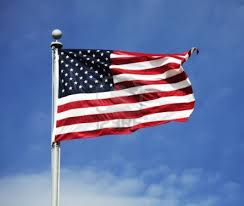Preserving our Freedom
What are ways we can protect and preserve our great freedom?
We can all help by doing something every day.
- Raise the Flag!
- Keep Streets & Neighborhoods Clean
- Vote
- Help Neighbors
- Be Interested
- Be Informed
- Be Involved
- Community Service
- Donate
- Write Your Local Newspaper
- Learn About Your Local Officials
- Raise Money for a Good Cause
- Obey Laws
- Don't Litter & Prevent Others
- Be a Good Citizen
- Join Town Meetings
- Show Appreciation for Service Men & Women
- Honor a Veteran
- Attend Memorials
- Visit a Historical Site
- Participate in Civic Organizations
The American Flag
American Flag Etiquette

Federal law stipulates many aspects of flag etiquette. The section of law dealing with American Flag etiquette is generally referred to as the Flag Code. Some general guidelines from the Flag Code answer many of the most common questions:
- The flag should be lighted at all times, either by sunlight or by an appropriate light source.
- The flag should be flown in fair weather, unless the flag is designed for inclement weather use.
- The flag should never be dipped to any person or thing. It is flown upside down only as a distress signal.
- The flag should not be used for any decoration in general. Bunting of blue, white and red stripes is available for these purposes. The blue stripe of the bunting should be on the top.
- The flag should never be used for any advertising purpose. It should not be embroidered, printed or otherwise impressed on such articles as cushions, handkerchiefs, napkins, boxes, or anything intended to be discarded after temporary use. Advertising signs should not be attached to the staff or halyard.
- The flag should not be used as part of a costume or athletic uniform, except that a flag patch may be used on the uniform of military personnel, fireman, policeman and members of patriotic organizations.
- The flag should never have any mark, insignia, letter, word, number, figure, or drawing of any kind placed on it, or attached to it.
- The flag should never be used for receiving, holding, carrying, or delivering anything.
- When the flag is lowered, no part of it should touch the ground or any other object; it should be received by waiting hands and arms. To store the flag it should be folded neatly and ceremoniously.
- The flag should be cleaned and mended when necessary.
- When a flag is so worn it is no longer fit to serve as a symbol of our country, it should be destroyed by burning in a dignified manner.
History of the American Flag
For more than 200 years, the American flag has been the symbol of our nation's strength and unity. It's been a source of pride and inspiration for millions of citizens. And the American Flag has been a prominent icon in our national history. Here are the highlights of its unique past.
On January 1, 1776, the Continental Army was reorganized in accordance with a Congressional resolution which placed American forces under George Washington's control. On that New Year's Day the Continental Army was laying siege to Boston which had been taken over by the British Army. Washington ordered the Grand Union flag hoisted above his base at Prospect Hill. It had 13 alternate red and white stripes and the British Union Jack in the upper left-hand corner (the canton).
In May of 1776, Betsy Ross reported that she sewed the first American flag.
On June 14, 1777, in order to establish an official flag for the new nation, the Continental Congress passed the first Flag Act: "Resolved, That the flag of the United States be made of thirteen stripes, alternate red and white; that the union be thirteen stars, white in a blue field, representing a new Constellation."
Between 1777 and 1960, Congress passed several acts that changed the shape, design and arrangement of the flag and allowed for additional stars and stripes to be added to reflect the admission of each new state.
- Act of January 13, 1794 - provided for 15 stripes and 15 stars after May 1795.
- Act of April 4, 1818 - provided for 13 stripes and one star for each state, to be added to the flag on the 4th of July following the admission of each new state, signed by President Monroe.
- Executive Order of President Taft dated June 24, 1912 - established proportions of the flag and provided for arrangement of the stars in six horizontal rows of eight each, a single point of each star to be upward.
- Executive Order of President Eisenhower dated January 3, 1959 - provided for the arrangement of the stars in seven rows of seven stars each, staggered horizontally and vertically.
- Executive Order of President Eisenhower dated August 21, 1959 - provided for the arrangement of the stars in nine rows of stars staggered horizontally and eleven rows of stars staggered vertically.
Today the flag consists of thirteen horizontal stripes, seven red alternating with 6 white. The stripes represent the original 13 colonies, the stars represent the 50 states of the Union. The colors of the flag are symbolic as well: Red symbolizes Hardiness and Valor, White symbolizes Purity and Innocence and Blue represents Vigilance, Perseverance and Justice.



